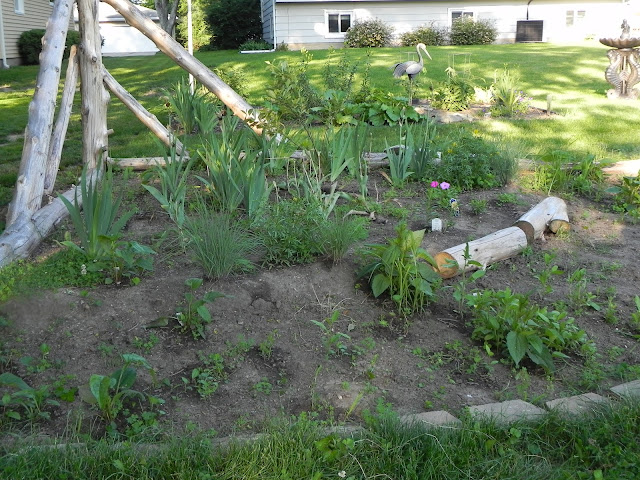Below you'll find a couple of photographs of our lawn from when we first purchased our home. You'll notice the stark absence of trees. From talking to the neighbors, we've been told that the yard once had Red Cedar in the front and back, but currently we have none. So the big task this year will be planting some trees.


When I sat down with these images over the winter, I realized exactly how jealous I am of P. Allen Smith and his fancy digital whiteboard. I started with a sketch pad and noted the places in the backyard whereby planting a tree would be next to impossible. I didn't want to shade out our wildflower garden, and I'm not convinced that planting a tree in the shady part of the yard will work well either. So most of the tree planting will need to be in the front yard.
The front yard will host four trees. The north end of the yard will have a wind-block made of Eastern White Pine, Red Cedar, and American Larch. Conifers are native to the boreal forests of North America and provide excellent shelter for the birds. On the south side of the front lawn, I plan to add a Red Oak. The acorns will attract birds and other critters, and oaks are also popular with birds that eat insects like woodpeckers and nuthatches. I'll add a couple of Nannyberry Viburnums near the oak tree as well. Lastly, I still wanted to plant something in the backyard to give the birds who visit our feeders a good place for perching, so something small like an Eastern Red Bud seems like a good choice.
The wildflower garden did pretty well last year, but there were a number flowers we did not get a chance to plant. The bed will be extended and widened, and the following flowers will be added: Lance-Leaf Coreopsis, Cardinal Flower, and Bee Balm. There is also a small, currently unused bed, near our air conditioner in which we found a single Columbine growing last summer. I've purchase more Columbine to add to this bed this year. We're hoping the addition of Bee Balm, Columbine, and Cardinal Flower will help our yard attract more butterflies and hummingbirds.

The shady corner is home to our compost bin which can be a bit unsightly. We had good luck with the Highbush Cranberry Viburnums and the Pagoda Dogwood which we added to this part of the yard last year, so we plan to add two more Highbush Cranberries. We will also plant some Ribes, particularly Coralberry, a type of Currant as well as a Highbush Blueberry. This corner is becoming the understory for our neighbors' oaks and maples.

The interesting part about our landscaping so far is that coupled with the different types of bird feeders, our miniature biomes attract different types of birds. The feeders full of sunflower seeds and peanuts are nearest the shady corner. Blue Jays, Downy Woodpeckers, and Black Capped Chickadees can be found in this part of the yard. Whereas the American Goldfinches and Dark Eyed Juncos can be found nearer the wildflower garden at the nyjer feeder. With some careful planning and clever plant selection, you too can create small habitats for the wildlife in your yard.


No comments:
Post a Comment